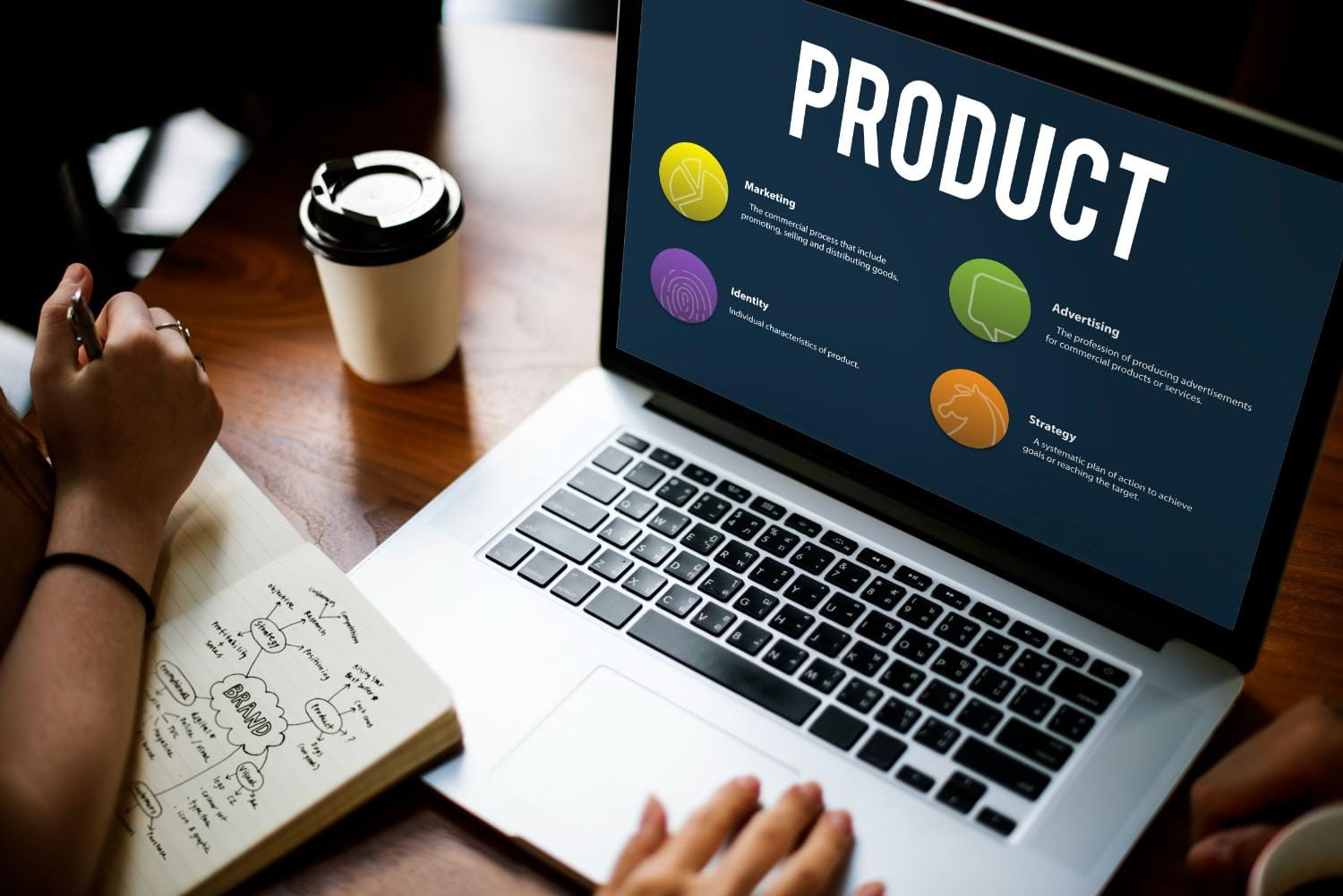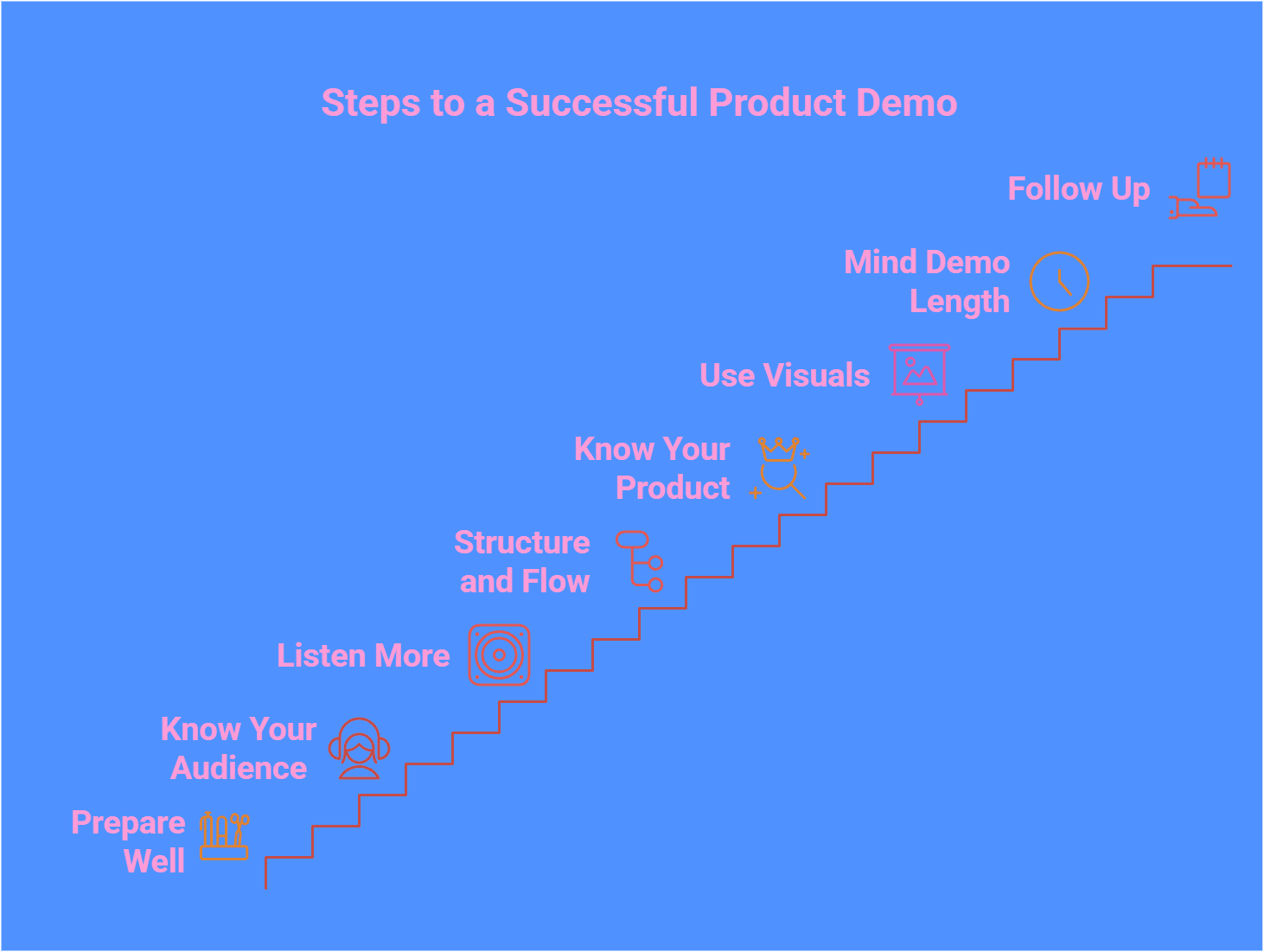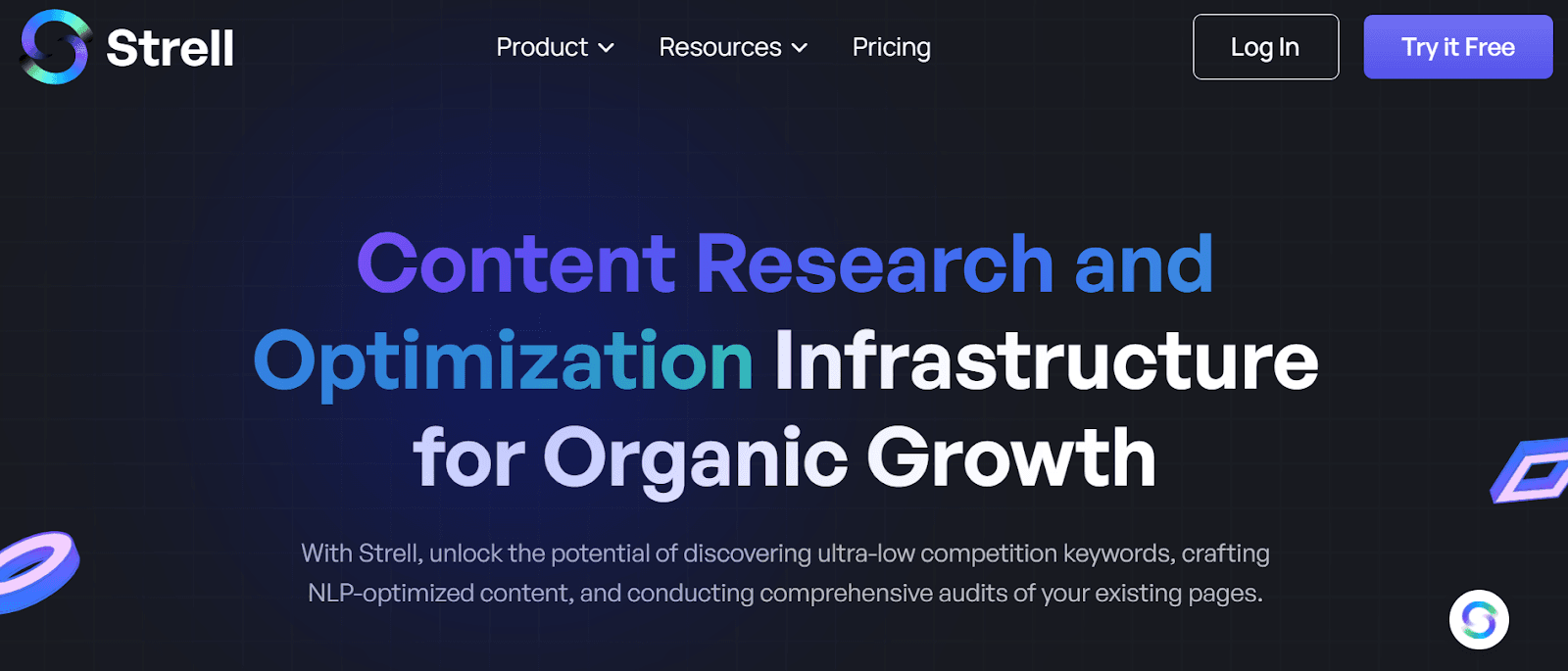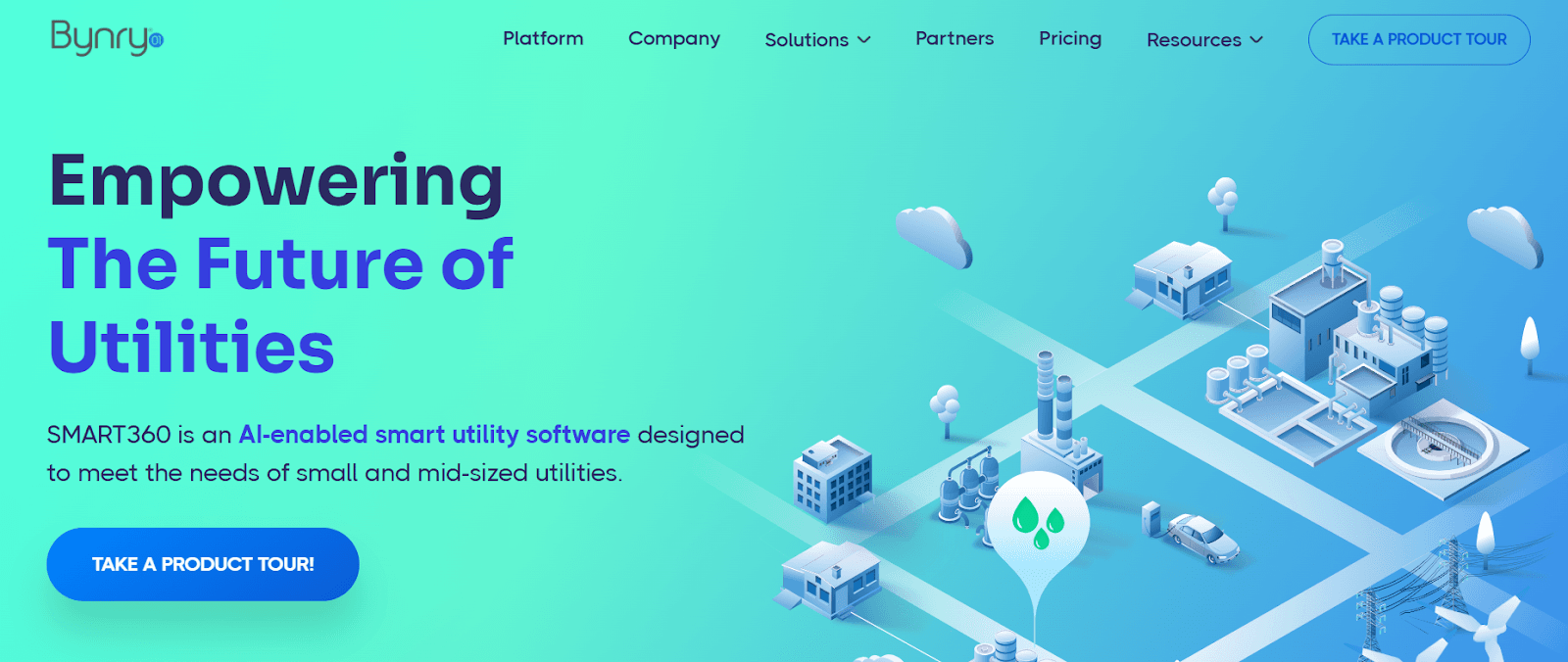How to Craft Product Demo Experience for Modern Audiences?
In today’s competitive market, creating standout product demos is key to addressing prospects’ pain points and driving conversions. A great demo goes beyond showcasing features—it’s about crafting an experience that demonstrates your product’s value while addressing your prospect’s pain points, building trust, and connecting with modern audiences.
In this blog, we’ll explore the challenges of engaging today’s buyers, how to leverage product demo platforms effectively and unveil nine secrets to delivering exceptional demos. By the end, you’ll know how to turn your demos into powerful tools for winning customers.
Who are Today's Modern Buyers, and What Do They Want?
Have you noticed how traditional sales tactics no longer resonate with buyers? That's because modern buyers have evolved. In the software industry, modern buyers take charge of their purchasing journey. They sift through countless resources and reviews before engaging with sales, seeking control, personalization, and vendors who truly understand their needs.
This is where a personalized and engaging product demo becomes essential. It's not just about showcasing features; it's about illustrating how those features enhance the product experience and solve specific challenges in the buyer's environment. Tailored demonstrations that align with their goals build trust and demonstrate real value to potential customers, making them more likely to engage and invest.
Where Do Product Demos Fall Short?

Traditional product demos often miss the mark with modern buyers. Here's why they struggle to engage:
Focusing on Selling, Not Solving: Buyers don't want a sales pitch—they want solutions. Demos that ignore buyer concerns and focus solely on features fail to connect.
One-Sided Narratives: With multiple stakeholders in any decision, many demos only address the audience in the room, neglecting the broader concerns of unseen decision-makers.
Delayed Personalization: Buyers often ask, "Just show me the demo!" Instead, traditional approaches insist on lengthy discovery processes, frustrating buyers and delaying their journey.
Complexity Overload: Explaining intricate software to mixed audiences is tricky. One-size-fits-all demos can confuse non-technical viewers and leave tech experts wanting more.
Lack of Engagement: Monologues don't sell. When demos become one-way lectures, they fail to foster meaningful dialogue, losing the buyer's attention.
Why Choose a Product Demo Platform?

A product demo platform revolutionizes the way you showcase your offerings, delivering tailored, interactive experiences that captivate modern buyers and enhance customer experience. For example, combining personalization, engagement, and analytics streamlines the sales process and helps you close deals faster while building trust and credibility with prospects. Let's check out all the reasons to opt for a product demo platform.
1. Deliver a Superior Buyer Experience
A demo platform creates engaging, personalized experiences that resonate with buyers, making your product stand out and fostering trust.
2. Elevate the Quality of Leads
By showcasing tailored demos, you attract more qualified, genuinely interested prospects, improving the quality of your sales pipeline.
3. Close Deals Faster
Streamlined demo processes and self-guided exploration options help buyers make decisions quickly, reducing the sales cycle length.
4. Increase Your Conversion Rates
Interactive, data-backed demos keep buyers engaged and confident, boosting the likelihood of turning prospects into customers.
5. Stay Ahead of the Competition
A polished demo experience sets you apart in a crowded market, positioning your brand as innovative and buyer-focused.
6. Make the Best Use of Insights to Improve
You can easily track buyer engagement and preferences with analytics and use this data to refine your demos for better performance.
Also Read: Storylane vs Walnut vs SmartCue: Which One is Right for You
What Can You Expect from the Product Demo Platform?
Now that you have understood how buying patterns have evolved and why a product demo platform is essential for attracting modern buyers, let’s dive into what you can expect from these platforms.
1. Demo Libraries for On-Demand Exploration
Empower buyers with self-guided demo libraries, offering ready-to-use templates they can explore at their convenience. It's all about meeting buyers where they are.
2. Tailored Personalization Made Simple
With no-code interfaces, even non-technical teams can quickly customize demo templates, ensuring every buyer gets a personalized, relevant experience.
3. Storytelling Through Bite-Sized Demos
Transform demos into a journey with snackable episodes. Each mini-demo unveils part of the product story, creating a compelling narrative that's easy to absorb and builds excitement.
4. Engagement at Every Step
Advanced features like video narratives, real-time communication, and strategically placed CTAs keep buyers captivated and connected throughout their journey.
5. Data-Driven Insights
Track user interactions and engagement to uncover what works and what doesn't. Use analytics to refine demos and enhance the buyer experience continually.
6. Integrated for Seamlessness
By integrating with CRMs and marketing platforms, demo experiences become part of a unified buyer journey, making the process smoother and more impactful.
What Are the Top 9 Secrets to a Winning Product Demo?

Delivering an exceptional product demo is crucial in capturing the attention of today’s discerning buyers. In this section, we’ll reveal the nine secrets to creating the ultimate product demo experience that engages, educates, and drives conversions.
1. Preparing well is the key
Preparing thoroughly is crucial for delivering a good product or sales demo. Here’s how you can prepare for the demo:
Start by diving into your prospect's needs—get to know their role, what their company aims to achieve, and their main pain points.
This detailed understanding allows presales teams to tailor your demo to address their specific challenges directly, making your pitch more relevant and persuasive.
Don’t stop at just knowing your prospect. Also, look into their competitors to see how your new product can give them an edge.
Prepare to share case studies or success stories from similar industries to show how your solution has worked for others. This not only makes your presentation more convincing but also helps build trust.
By showing that you understand their unique situation and that others have seen success with your product, you boost your chances of a successful outcome and stand out from the competition.
2. Know your audience
Another step to delivering a successful live product demonstration or sales presentation is to research and understand your prospect thoroughly during the consideration stage. Below is what you need to do to know your audience well:
It's crucial to go beyond basic details—delve into their specific challenges and the systems they currently use, and identify the key decision-makers.
This depth of knowledge allows you to tailor your demo to address their most pressing issues, utilizing personalized information such as specific pain points or relevant personal details.
This personalized experience approach ensures your demo feels both personal and precisely aligned with their needs and the necessary information for the sales cycle.
Next, gather insights into your audience’s unique needs through various methods and best practices.
Use surveys, review industry reports, and monitor discussions on forums and social media to understand their preferences and concerns comprehensively.
With this information, you can customize your demo to spotlight its key features that address their problems, match their level of expertise, and help close deals faster.
For a tech-savvy audience, dive into the technical specifics and advanced features. For others, focus on the overarching benefits and value of the product.
This targeted approach enhances engagement and demonstrates a clear understanding of how your solution can effectively meet their needs and use cases.
3. Talk less and listen more
A good demo isn't just about you talking—it's about conversing with current and existing customers. Follow the below pointers during this stage:
Let your prospect do most of the talking to avoid presenting to the wrong crowd, and ensure they have plenty of chances to ask questions and engage with the sales rep.
Remember, the more you involve your audience, the stronger their connection to your offering. Interaction keeps your demo from feeling like just another sales pitch and makes it a dynamic conversation in real time.
Encourage feedback, spark discussions, and invite questions to create an environment where your viewers feel genuinely involved with interactive real-time product tours, demo tools, and marketing materials.
Pause after they speak to avoid cutting them off. The more you listen, the better you can tailor your demo to their needs, making for a more engaging and effective presentation. Invite questions and respond positively to feedback, showing you appreciate their input.
This way, your demo becomes a two-way conversation, significantly boosting engagement, smoothing your buyer’s journey, and leaving a lasting impression.
Also Read: What makes the difference between a good and a great product demo?
4. Structure and flow
Start with a compelling introduction that clearly states the demo's purpose and highlights the specific problem your product solves for your audience. Then follow the below steps:
Use this opportunity to align your demo with the audience's specific needs and pain points, ensuring your message resonates from the beginning.
In the main section, showcase your product's key features interactively, allowing your audience to experience how it addresses their needs.
Use practical examples or live scenarios to illustrate real-world applications and demonstrate how the product can solve their problems.
Engage your audience by encouraging them to interact with the product, ask questions, and provide feedback. This hands-on approach makes the demo more impactful and memorable.
Wrap up with a concise summary that reinforces the main points and clearly outlines the next steps, concluding with a clear call-to-action for your audience.
Encourage your audience to sign up for a trial, schedule a follow-up meeting, or take any other action that advances the sales process.
Throughout the demo, ensure a logical flow by addressing the most pressing issues first and then moving on to supplementary features.
Maintain a balanced pace by frequently checking in with your audience, addressing questions, and keeping them engaged.
This structured approach will enhance their understanding, sustain their interest, and significantly increase the likelihood of a successful close rate.
5. Know your product inside out
To nail your product demo process, it's essential to master every aspect. This includes knowing all its specific features and functionalities and how it can benefit users. Being well-versed in your product helps you confidently handle questions and effectively showcase what makes your offering unique. To do this, master the following points:
Dive into product manuals, attend all relevant training sessions, and engage with the product yourself to gain a deep understanding of your sales efforts. This hands-on experience allows you to present your product with authority and authenticity.
During the demo, focus on the key features that directly address the prospect’s needs. Tailor your presentation to highlight how these features resolve their specific pain points.
For instance, if exceptional customer support is a key strength, provide real-life examples or data illustrating its impact.
Prepare for potential issues by having a backup plan ready, ensuring you can handle any hiccups smoothly without disrupting the demo flow.
This preparation demonstrates your expertise and reassures prospects that you can provide reliable solutions and support.
6. Enhance your product demo experience with visuals and storytelling
Use visuals and storytelling to make your product demo video engaging and memorable. Here’s how to do this:
Start by creating personalized graphs and charts with real data to highlight key points and make a strong case for your product.
Screen sharing and slide presentations can effectively support your message—just be sure to practice in advance, keep your desktop organized, and use slides to emphasize essential information and social proof.
You can incorporate live demos to provide a real-time look at your product in action and showcase its product benefits.
Remember that storytelling is a powerful tool for connecting with your audience and making them realize the value of your product.
Frame your product features within a story that addresses your audience’s real-world problems.
This approach helps your demo resonate more deeply, making it easier for your audience to see its practical benefits and value.
By combining unique visuals and storytelling, you'll create a more impactful and compelling product demo experience that truly showcases how your product works.
7. Be mindful of the length of your demo
For product demos, aim for a duration of 15 to 20 minutes. This timeframe is effective for maintaining audience engagement while covering key features. Learn more about the duration of your demo with the following key points:
A shorter demo helps prevent information overload and keeps the prospect focused on the most important points.
Concentrate on showcasing the core features that address the prospect’s specific needs and avoid diving into excessive technical details unless they are crucial to the decision-making process.
A concise demo ensures the prospect remains interested and retains key information without feeling overwhelmed by too much information.
This approach helps you highlight the product’s value effectively, making your presentation more impactful and increasing the likelihood of a positive outcome.
Balancing brevity with depth maximizes the demo’s effectiveness, ensuring your audience understands how your product can solve their problems without losing their attention.
8. Practice makes perfect
Rehearse your entire presentation several times to refine your approach and build confidence. Treat each rehearsal like a real demo by simulating the full experience, including answering potential questions. Here’s why this is important:
Practicing will help you identify and smooth out any rough patches and ensure you effectively cover all the key points.
Recording and reviewing your practice sessions can provide invaluable insights. Besides, watching yourself present allows you to assess your delivery, tone, and body language and spot areas needing improvement.
Pay attention to how clearly you explain each feature, how engaging your delivery is, and whether you effectively highlight the product’s benefits.
Reviewing these recordings helps you catch any missed details, awkward moments, or inconsistencies, enabling you to make necessary adjustments before the actual demo.
Additionally, consider practicing in front of colleagues or friends who can provide constructive feedback. Their fresh perspective can reveal aspects you might overlook, such as clarity or pacing issues.
By refining your demo through repeated practice and feedback, you'll be better prepared to deliver a clear, engaging, and persuasive presentation that resonates with your audience and effectively showcases your product’s value.
9. Follow-up after the demo
Continuing engagement at the end of the demo is crucial for turning prospects into customers. Here are the advantages of following up after the demo:
Following up quickly after a discovery call allows you to address any remaining questions, reinforce the value of the software and benefits of your product, and provide additional insights based on their specific needs.
This ongoing interaction keeps your product top-of-mind and shows your commitment to addressing their challenges effectively.
Additionally, actively seeking detailed feedback helps you fine-tune your demo strategy.
Use surveys or direct communication to gather information about their experience, preferences, and areas where they think the demo could improve.
Understanding their perspective allows you to make necessary adjustments, demonstrating that you value their input and are dedicated to continuous improvement.
This approach improves your future demos and builds stronger relationships with prospects, increasing your chances of a successful conversion.
By prioritizing post-demo engagement and feedback, you enhance your overall demo effectiveness and drive better results.
How to Choose the Best Product Demo Platform?
Selecting the right tool for creating impactful product demos is crucial for enhancing customer engagement and streamlining your sales process.
Here's a simplified guide to help you make the best choice:
Identify what you want to achieve, such as improved engagement, shorter sales cycles, or personalized buyer experiences.
Explore available platforms and narrow down your options based on how well they align with your goals.
Look for features like customization, analytics, and automation that can make your demos more effective and engaging.
Choose a platform that grows with your business and adapts to your evolving needs, ensuring scalability.
You must also ensure compatibility with your existing CRM or marketing tools for seamless workflow and better tracking.
Opt for a platform with an intuitive interface and excellent customer support to smooth the process.
Lastly, compare Pricing and ROI. Balance cost against the value the tool provides to ensure a worthwhile investment.
Remember, with the right demo platform, such as SmartCue; you can elevate your sales strategy and deliver exceptional buyer experiences.
Discover How SmartCue is Driving Success: 3 Standout Product Demo Experience Examples
Ready to be inspired? Check out these stories of how SmartCue is making a real impact.
1. Strell

Strell, an AI-powered SEO content optimization platform, utilizes SmartCue to offer self-serve demos and product tours. These interactive experiences allow users to explore the depth of Strell's AI-driven SEO tools, demonstrating how real-time data analysis can significantly enhance content optimization.
With SmartCue, Strell provides product tours that highlight key content optimization features. At the same time, onboarding experiences ensure users become familiar with the platform’s full capabilities, helping them easily optimize their content.
2. Kloudle

Kloudle, a platform specializing in cloud security automation, leverages SmartCue to deliver interactive product tours that help users navigate its tools. These tours focus on simplifying cloud security for developers by showcasing how Kloudle eliminates human error, ensuring a secure and efficient cloud infrastructure.
With SmartCue, Kloudle offers onboarding experiences that introduce users to its key features. But that’s not all! You’ll also get tutorials that provide step-by-step guidance on identifying and correcting cloud security misconfigurations.
3. Bynry

Bynry, a leader in smart utility software solutions, also finds SmartCue to be helpful. The firm uses SmartCue to provide interactive self-serve demos and product tours. These experiences allow potential clients to explore Bynry’s cutting-edge SaaS products, offering a hands-on understanding of their features and benefits.
With SmartCue, Bynry presents demos that highlight key utility management features, comprehensive product tours focusing on AI and analytics capabilities, and seamless onboarding experiences to ensure smooth adoption for new users.
Why Choose SmartCue for Crafting Personalized Demo?
Do you wish to say goodbye to boring, cookie-cutter demos? With SmartCue, every demo becomes an opportunity to wow your audience and seal the deal. Designed to save you time and amp up your creativity, SmartCue makes it easy to craft personalized, impactful demos that truly showcase what sets your product apart.
But that’s not all. SmartCue doesn’t just help you present—it helps you connect. Track user engagement in real-time, understand what clicks with your audience, and fine-tune your approach to deliver results that matter. Whether you’re looking to impress a single client or scale your efforts across teams, SmartCue keeps you ahead of the game.
Stop settling for "good enough" and start creating demos that inspire action. Visit our website for a personalized demo and start your 14-day free trial to discover how SmartCue can revolutionize your sales process.
Final Thoughts on Product Demos
Product demos should focus on connecting with the audience, addressing their needs, and making a lasting impact. Customize interactive demos to showcase how your product solves real-life problems, using storytelling for relatability. Explore different demo types for effectiveness, practice regularly, and review your presentation for improvement.
After the demo, promptly address any questions and follow up with clear answers, offering additional meetings if necessary. This proactive approach builds trust and moves the buying decision forward, demonstrating commitment to customer support.
Frequently Asked Questions
What is the role of a demo?
A product demo is a live or recorded presentation that highlights a product's features, capabilities, and benefits. It serves as a powerful tool to demonstrate how the product can effectively address customer challenges, making it an influential step in driving purchase decisions.
How can I make my product demo more engaging?
Ensure that your product demo is interactive to make it a good product demo. Encourage your prospects to ask questions, share feedback, or even try the product during the demo. Use relatable scenarios or storytelling to elicit emotional connections and keep the demo experience interactive and dynamic.
How long should a product demo be?
While there's no set rule, a product demo typically lasts between 15-60 minutes, depending on the complexity of the product and the prospect's familiarity with it. Nonetheless, it's crucial to respect your prospect's time and ensure that your demo is concise, relevant, and provides value.
What tools can I use to enhance my product demo?
Numerous tools can enhance your compelling SaaS demos and product demos. Screen-sharing tools like Zoom or Slideshare can be used for virtual demos. Recording software demos like Loom or Camtasia can be beneficial. Incorporating interactive elements with tools like Prezi or Mentimeter can make your demo more engaging.
Comments
Your comment has been submitted successfully!